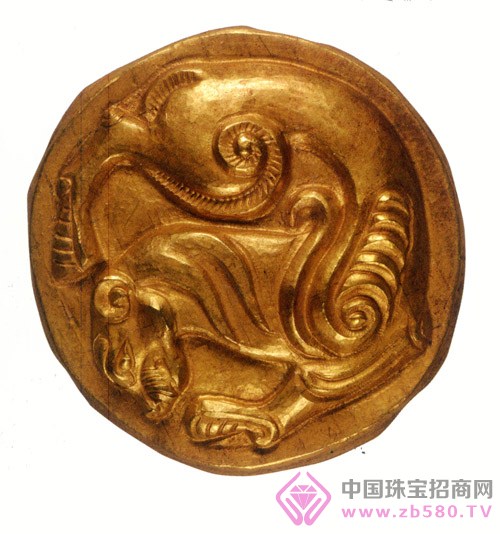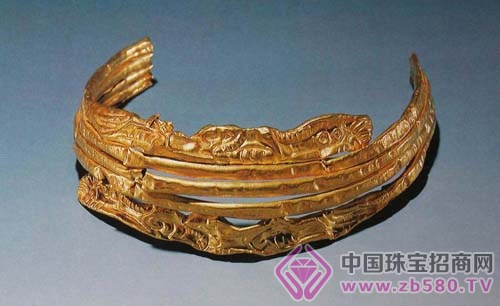
Tiger-shaped gold ornaments in Alagou
The fierceness and tenacity of the tiger have always been respected by people. The worship of the tiger totem is very common in ancient times. On the bronzes of the Shang Dynasty, tiger-shaped patterns abound. The Hu Fu is an important token of the emperor's acquaintance and dispatching troops. It is prevalent in the Spring and Autumn Period and the Qin and Han Dynasties. The ancient Serbs, the Xiongnu, the Turks, and the Hui people in Xinjiang all like tigers. In 1978, when the famous archaeologist Wang Binghua was excavated in the Alagou tombs in the Turpan Basin, he discovered a young woman's tomb that had been fragrant and fragrant, with dazzling gold ornaments scattered. Experts speculate that this golden tomb may have been left by the ancient Serbs of the Warring States to the Han Dynasty. This woman may be a daughter of a tribal chieftain.
The amount of gold unearthed from the tombs of Alagou is large, and the total size is more than 200 pieces. Most are belts and clothing. The tiger-shaped round card is eight pieces (above) with a diameter of 6 cm and a weight of 20 grams. The tiger's body is curled into a semi-circle in the pattern, which is very dynamic. There are four pieces of tiger-shaped gold foil tape, which are 26 cm long, 3.3 cm wide and weigh 27.75 g. They are long strips and are inlaid on leather. The two tigers are opposite each other. The unique shape, fine craftsmanship, showing a high level of craftsmanship, scholars believe that this is the performance of the ancient ancient residents totem worship. Animal print is the main feature of grassland culture. The Serbs are the ancient nomads in Xinjiang. They like to wear ornaments such as lions, tigers, wolves and other animal ornaments. Scholars call it "beast style."
In the Han Dynasty, the aristocrats of Turpan also preferred the gold ornaments with the "beast style". In 1996, the archaeologists found the golden crown (middle figure) and tiger-shaped gold ring of the decorative tiger pattern in the tomb of the old city of Jiaohe, Turpan City. The bullish-shaped gold medals reflect this grassland culture.

Fun and interesting tiger shape
In 1994, the monster and tiger-shaped gold medals unearthed from the tomb of the north of Jiaocheng, the city of Turpan, was a precious artifact full of mystery. The gold medal is semi-embossed. I saw a eagle-nosed dragon and a hawk-clawed monster. He was holding a tiger's neck and the eagle claw caught the tiger's face. The tiger has a low head and a tail, and a pair of monsters bite, helpless state, forming a stark contrast between the fierceness of the monster and the tiger's sorrow, quite interesting.
Tigers also often appear in ancient bronzes, such as the tiger-bone sheep bronze ornaments from the Warring States to the Han Dynasty unearthed in the tomb of Aiding Lake in Turpan. The cast is delicate, and the tiger bites a sheep curled up while walking. The openwork method depicts the tiger's strong body and stout limbs, and even the claws and toes are portrayed in a vivid way. It is a three-dimensional picture of a vivid and realistic beast biting a domestic animal.
The tigers in the woolen fabrics are well-behaved. In 1985, a piece of yellow wool found in the tomb of Luke in the end of the county is decorated with lifelike tigers and camels. It is like a modern cartoon tiger, showing the taste of elegant children. Experts believe that the tiger on the wool is hand-painted by residents at the end of more than 2,800 years.
Women Black Blazer,Slim Women Blazer,Sexy Long Blazers,Long Blazers For Women
Shaoxing Julong Trading Co.,Ltd. , https://www.julong-foeec.com